Such rapid technological change continues to drive the thirst for more scalable and reliable cybernetic systems at an unparalleled momentum. Leading this transformation is the introduction of 100 Gigabit Ethernet (100GbE), the audacious paradigm shift in networking technology. Existing technology systems such as artificial intelligence, cloud computing, and IoT (Internet of Things) are heavily reliant on real-time data processing, and 100GbE Ethernet is primed to support enormous data loads. From seamless data processing, 100GbE is poised to become a pivotal backbone for modern enterprises and is destined to support business functions in modern enterprises. This article will clarify some of the unquestionable 100GbE advantages such as its impact across industries, along with a bit of how it is transforming the future of connectivity. This innovation is one that no business will want to miss out on in the modern digital economy.
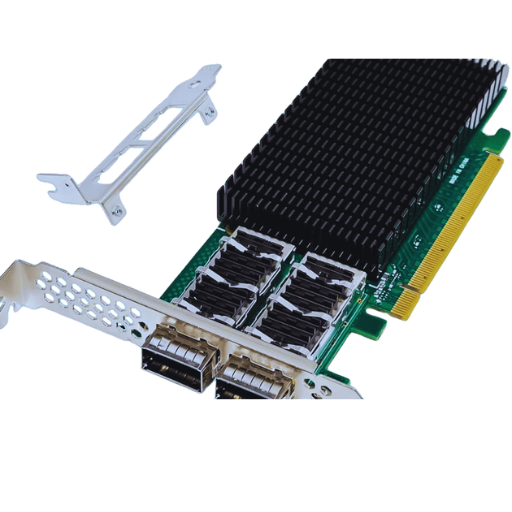
100 Gigabit Ethernet (100GbE) is a new telecommunication standard capable of transferring data at a speed of 100 gigabits per second with the aid of advanced optical or electrical transmission technologies. Like its predecessors, the 100GbE standard relies on the parallel transmission of multiple data streams which are combined to achieve higher efficiency. Beacons of data transmission for backbone networks form the core of this system, and it is integrated into data centers and cloud computing facilities in telecommunication providers to achieve superior performance.
Such a standard is designed for fast-growing data applications, like those of cloud storage and telecommunications, delivering low delay and high precision. Its adoption prevents network overload, boosts scalability, and facilitates speedier data sharing to keep pace with changing business requirements. This is truly enabling for companies that are building up an infrastructure capable of sustaining high bandwidth in the future for uninterrupted and seamless connectivity.
The IEEE provisions for 100 Gigabit Ethernet (GbE) lie within the IEEE 802.3 family of specifications and in particular IEEE 802.3ba and its amendments. They set the terms for the fastest possible communication over different media like copper cables, single-mode fiber, and multi-mode fiber, as well as defining media and system integration aspects. These standards specify issues like data throughput and the hardware and software attributes of the ethernet to enable compatibility among different networks. Organizations can implement seamless and effective solutions designed for high bandwidth usage by following these standards.
Transceivers are an essential part of a gigabit network infrastructure, serving as the connection point of network devices to fiber or copper cables. Their function involves translating the electronic signals produced by the network devices into optical or electrical signals which can be transmitted via the communication medium. Current models of transceivers, like the SFP and SFP Plus modules, as well as SC Quad modules, have been developed to work with data rates from 1 Gbps to 400 Gbps.
Network transceivers have a direct bearing on the latency, throughput, and overall efficiency of the network. A case in point is the growing use of SFP Plus transceivers for 10 Gigabit Ethernet networks which allow data transfer over single-mode fiber to a distance of 80 kilometers, while multimode tends to be around 300 meters. In addition, data centers and enterprise networks benefit from rapid data consolidation along with bandwidth expansion afforded by QSFP28 transceivers which are widely deployed in 100 Gigabit Ethernet systems.
New developments in technology brought about tunable transceivers and digital diagnostic monitoring (DDM) features. The availability of multiple wavelengths in tunable transceivers increases flexibility and mitigates the challenge of having to stock a multitude of fixed-wavelength modules. Furthermore, DDM enables the monitoring of the switch’s power, temperature, and voltage, making preset maintenance easier and enhancing operational dependability.
Transceiver technology continues to evolve with the ever-increasing need for high-bandwidth use cases like video streaming, cloud applications, and AI workloads. Implementing advanced transceiver solutions enhances an organization’s capabilities in optimizing network scalability, lowering the cost of operations, as well as enabling easier integration into next-generation networks.
Speed of Data Transmission
The primary difference between 10 Gigabit Ethernet (10 GbE) and 100 Gigabit Ethernet (100 GbE) is data transmission speed. 10 GbE has a maximum speed of 10 Gbps and 100 Gbps for 100 GbE. The speed of 100 GbE is ten times greater. This speed increase is particularly beneficial for ultra-high-bandwidth applications like large data centers and backbone network infrastructures.
Network Architecture
10 GbE is used for enterprise-level environments where there are connections between the servers, switches, and storage; it is utilized within much smaller spaces/lots. On the other hand, 100 GbE is widely used for hyperscale data centers, as well as network backbones because it supports the aggregation of many 10 GbE or 40 GbE connections to enable smooth high-speed performance across complex systems.
Power and Energy Efficiency
While power consumption of 100 GbE is higher than 10 GbE, it is far more economical in power usage per gigabit of data. It saves money because advances in the transceiver and chipset designs have reduced energy used to support higher bandwidth without deeply raising the operational cost.
Cabling and Physical Media
The Ethernet protocol dictates that, for long distances, 10 GbE must use either optical fiber or copper cables for short distances, which can be, for example, Cat6a. However, 100 GbE predominately uses optical Single Mode Fiber (SMF) or Multi-Mode Fiber (MMF) for long distances. Furthermore, it incorporates advanced technology at higher ranges, such as QSFP28 transceivers and wavelength-division multiplexing, which increases functionality over greater distances.
Latency and Packet Handling
Compared to the 10 Mbps ethernet standard, 100 Gbe provides lower latency and improved packet-handling capabilities. This is crucial for latency-sensitive applications such as high-frequency trading, cloud-based AI operations, and advanced gaming platforms, which need low latency time measures since milliseconds can severely influence outcomes.
Cost Considerations
The total cost of ownership (TCO) over time tends to be more favorable even while the initial deployment cost of 100 GbE is significantly higher than 10 GbE. This is mainly because of enhanced scalability, lower energy consumption per gigabit, and fewer needed links for the same performance.
Scalability and Future Readiness
Unlike 10 GbE, which has limited scaling options, 100 GbE offers much greater scalability, enabling future upgrades to be more easily integrated as the demand on the network expands. It is a more forward-looking solution given its modular designs, with emerging technologies such as 400 GbE.
Both 10 GbE and 100 GbE play essential roles in modern networking, however, their application is largely determined by the unique infrastructure, budgetary, and expansion needs.
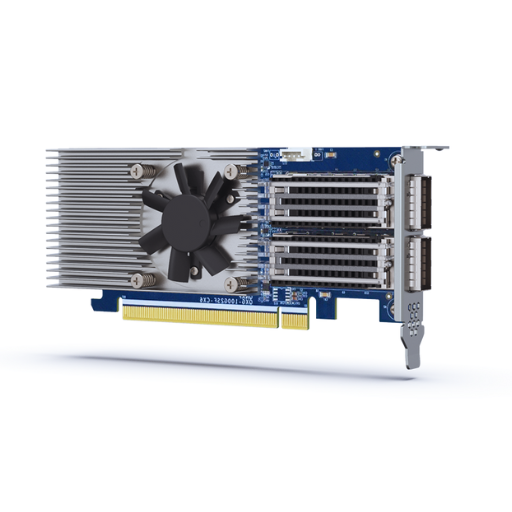
With 100 Gigabit Ethernet (100 GbE), there is a significant improvement in bandwidth, which results in faster data transfer and greater network efficiency. Its designed bandwidth capacity of 100 Gbps makes it suitable for modern enterprise networks, data centers, and high-performance computing environments while its maximum theoretical throughput of 100 Gbps would allow for increasing efficiency in functionality. It can handle large amounts of data making it ideal for cloud computing, virtualization, or big data analytics.
One of the critical benefits of 100 GbE is the support of multiple High bandwidth applications simultaneously, 100 GbE can support 100 Gbps streams over fiber or copper cables with minimal latency making it ideal for data center environments. This allows metered hyperscale data centers and other infrastructures that manage high-density workloads to simultaneously support numerous workloads efficiently.
Furthermore, research indicates that 100 GbE has a higher bandwidth compared to 10 GbE and this allows for up to 100 Gbps of network speed with minimal congestion. 100 GbE also enhances the handling of peak network traffic load allowing for smooth seamless operations during high network demand. An example is, using organizations that reported reduced data packet loss and network jitter which in turn improved reliability and enhanced user experience.
In addition, and with the improvement of optical technologies such as Dense Wavelength Division Multiplexing (DWDM), the 100 GbE interfaces have gained capabilities of longer transmission distance without signal quality degradation. This makes them suitably preferred for long-haul connections and multi-location enterprise setups. Furthermore, these attributes clearly show how the 100 GbE not only meets the current bandwidth requirements but also provides a long-term solution for next-generation networks.
The speed of Ethernet is instrumental in defining the efficiency and scalability of contemporary systems. Businesses utilize and operate IoT devices, cloud computing, and data-heavy applications which all require consistent and seamless data transfer. The standards of Ethernet have changed considerably over the years, with Gigabit Ethernet (1GbE) now being the basic requirement. Additional options such as 10GbE, 40GbE, and 100GbE are now being offered by corporations that manage vast amounts of data traffic.
According to a recent report, global IP traffic is projected to rise to 396 exabytes each month by 2025 due to the growth in remote working, video streaming, and the use of connected devices. Networks need to be efficient enough to maintain the quality of service without experiencing excessive delays or outages during periods of high traffic. Having higher Ethernet speeds reduces the chances of bottlenecking and offers greater responsiveness.
Increased Ethernet speed helps reduce the total cost of ownership (TCO) of a data center due to lower data transfer expenses. Energy Efficient Ethernet (EEE) and other hardware consolidation technologies allow an organization to allocate resources more effectively without increasing power consumption. For instance, 100 Gigabit Ethernet (GbE) provides up to 10 times more bandwidth than 10 Gigabit Ethernet (GbE), yet it is significantly cheaper, both financially and operationally, for businesses anticipating future growth.
Moreover, the rapid advancement of artificial intelligence (AI) and machine learning (ML) technologies that process and transmit large volumes of data in real-time also benefits from higher Ethernet speed. Higher speeds also enable real-time analytics and subsequent decision-making in industries such as healthcare, finance, and telecommunications that are time-sensitive. By using higher Ethernet speeds, network designers can create a more comprehensive infrastructure that incorporates new technological advancements more easily.
The adoption of 100 Gigabit Ethernet Systems (100GbE) offers major benefits to the data centers including greater efficiency, better acceptability, and superior performance of the network. It permits the transfer of data at higher rates facilitating cloud computing, big data, and AI-driven application processing. Also, with the use of 100 GigE networks, server-side communication is optimized by reducing congestion due to an increased volume of supported traffic and enabling RDMA over converged ethernet. It is also cost-efficient due to its scalability which can handle future expansion of the rapidly growing infrastructure. Thus, regions can adopt 100 GbE systems networks and maintain high performance and required dependability even for modern data-driven environments.
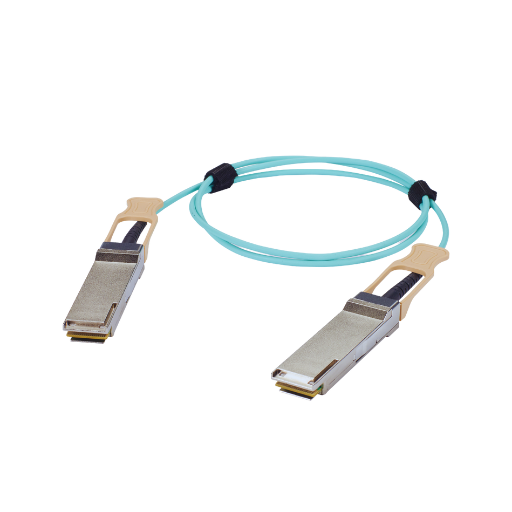
Speed and Performance
The data transmission rate of 100 GbE far outstrips that of Fast Ethernet, which is capped at 100 Mbps. As such, 100 GbE is optimal for applications that are data-rich as well as for real-time processing.
Scalability
While Fast Ethernet is outdated and unable to support expanding infrastructures, 100 GbE is designed to meet the ever-changing demands of modern networks while capturing future scaling needs.
Reliability and Efficiency
100 GbE provides improved and more efficient network operations with minimal bottlenecks when compared to Fast Ethernet, because of the better support for high traffic volume.
Use Cases
Fast Ethernet continues to be useful for small networks that do not require large amounts of data, whereas 100 GbE is vital for large-scale data centers, cloud computing, or enterprise networks that need robust connectivity.
In my opinion, the advantages of Ethernet networks with 100 GbE technology are indisputable. They offer outstanding speed and expandability which is crucial towards fulfilling the requirements of contemporary data-heavy processes. Moreover, the reliability of the network is improved, latency is reduced and higher traffic volumes are easily managed due to 100 GbE. Such features make it indispensable for companies that are trying to improve efficiency on large infrastructures like data centers or cloud uses.
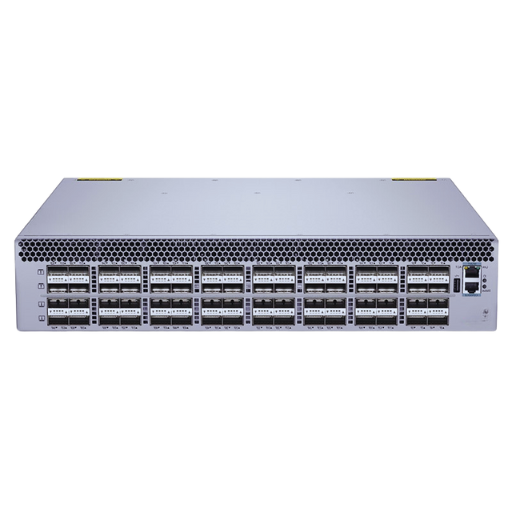
The IEEE 802.3 Ethernet standards were made by the Institute of Electrical and Electronics Engineers (IEEE) which is the governing body for defining and controlling the general principles and guidelines for world aviation. The set of regulations has been laid down in the first place to ensure universality amongst all the devices and networks encountered, alongside setting the parameters of pace, performance; speed, and dependability. This has played a keystone role in meeting high bandwidth applications over the years.
Particularly, IEEE 802.3ba’s development provided support for the 40 GbE and 100 GbE. This advancement catapulted data transmission speeds for big enterprise networks. This standard was later improved on by 802.3bj, making the reduced power 100 GbE backbone and copper cable-friendly. More recently, 802.3cd increased the functionality of 100G Ethernet by lowering the standard for the backplane and twin axial cable’s PHY specification to enable faster and more efficient data transfer and reception.
The adoption of 802.3 standards in data centers, enterprise environments, and telecommunication networks shows how backbone infrastructure is interconnected globally. For instance, 100 GbE governed under these standards can deliver sustained throughput needed by bandwidth-intensive applications like video streaming, AI, and big-data analytics. A growing number of data centers now depend on the integration of 802.3-compliant devices with other equipment to achieve seamless integration, scalability, and effective power efficiency in high-density environments. Deployments per data center demonstrate speeds over 70 Tbps in accumulated bandwidth.
The IEEE 802.3 framework standardized Ethernet technologies, which has greatly impacted the development and flexibility of networking as evolving requirements for speed, dependability, and energy efficiency are incorporated. Its continuous development aids new technologies such as 200 GbE and 400 GbE aimed at mitigating the rapid increase of data traffic in the world.
The Institute of Electrical and Electronics Engineers (IEEE) is a world leader in the advancement of technology and innovation in various fields such as electrical engineering, communications, and computer sciences. Initially founded in America, the IEEE, with its headquarters now in New York, has spread its influence across regions with over 400,000 members in more than 160 countries. It is well-renowned for its standardization work, promotion of research, and educational activities.
Remarkably, Ethernet technology comes under IEEE 802.3, one of the most sophisticated standards established by The Institute of Electrical and Electronics Engineers. This standard has powered seamless data transfer across the globe, aiding modern networking solutions to be integrated at a faster pace. More than 1,300 active standards and projects are under the supervision of the IEEE Standards Association, a branch of the organization that includes machine learning networks and sustainable energy systems.
Besides focusing on standardization, IEEE is also instrumental in providing the most up-to-date information through its five million documents library in IEEE Xplore. This repository covers a great variety of subjects such as the Internet of Things (IoT), artificial intelligence, and blockchain technologies so that engineers and experts can obtain the foremost innovations. Also, the institution aids in cutting-edge research as well as collaborating and sharing innovative research with researchers through its international conferences like the IEEE International Electron Devices Meeting (IEDM) and the IEEE Global Communications Conference (GLOBECOM) Integration meetings’.
IEEE also advances technology by sponsoring research and educational outreach activities. Their commitment to nurturing innovation shows in their Smart Village program, which uses renewable energy technologies to provide sustainable solutions to unserved communities and improves the lives of millions of people worldwide. In addition, fueled by the desire to connect the world more efficiently, IEEE actively participates in the advancement of next-generation 5G and 6G networks which are expected to have the highest speed and the lowest latency, needed for future uses like self-driving cars, telemedicine, and smart cities.
In shaping the evolution of technology, the IEEE integrates standards, research, and educational contributions within the scope of a perpetually evolving environment. The profound impact that IEE makes underscores its mission to innovate technology for the betterment of humanity.
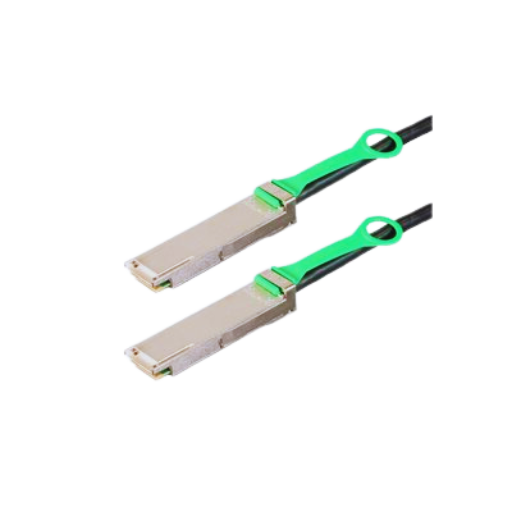
Data Centers and Cloud Computing
To meet the bandwidth of modern cloud computing services, data centers are utilizing 100 GbE to an ever-increasing extent. It facilitates high-volume data transfer between servers and storage systems as well as between the servers and network infrastructure which assists in smooth functioning and lowers latency.
High-Performance Computing (HPC)
Firms using HPC for data-intensive activities such as scientific simulations, AI, and machine learning adopt 100 GbE to enable fast data manipulation and efficient communication between nodes.
Enterprise Networks Supporting Large-Scale Applications
Large-scale enterprises that have extensive business applications, including ERP systems and business intelligence tools need 100 GbE at the baseline. It enables faster retrieval of important information and provides good-quality network services to accommodate increasing users and enhanced application server demands.
Media and Entertainment
Especially for the media sector, 100 GbE is a technological prerequisite for the effective handling and transmission of high volumes of high-resolution video content. It assists both in video editing and broadcasting as well as streaming by providing the necessary speed and reliability to enable efficient workflows.
Financial Services
In the financial vertical, organizations shift to 100 GbE to cater to the increasing data processing needs associated with high-frequency trades and complex algorithmic management with real-time analysis. Their competitive performance hinges on the 100 GbE’s high throughput and low latency.
Significant Upfront Costs
Compatibility with Legacy Systems
Infrastructure scalability
Proficient People
When these problems are met with relevant solutions, organizations can fully use and implement 100 GbE networks optimally.
The latest development of optical transceivers for 100 GbE targets higher data transmission rates with enhanced efficiency in power consumption and improvement in network architecture compatibility. Notable improvements comprise the creation of QSFP28 modules with small form factors and high-speed connectivity at low power consumption. Also, the incorporation of silicon photonics technology has led to a greater reduction in size and cost. These improvements lead to more rapid deployment of enhanced capacity networks which provide organizations with adaptable and dependable solutions to the escalated data challenges.
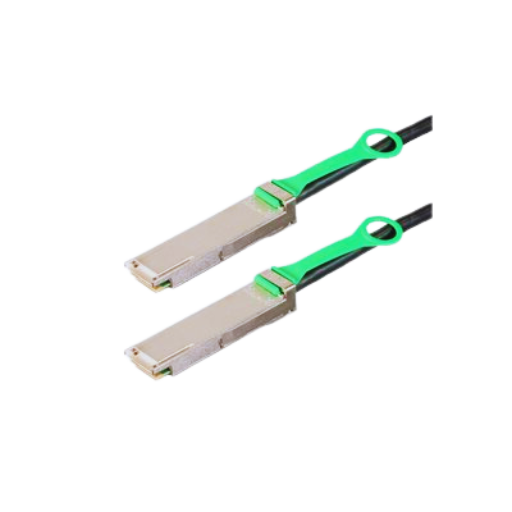
A: 100G Ethernet or 100 Gigabit Ethernet or 100GbE is one of the fastest Ethernet standards in existence, which allows for the transfer of data at a rate of 100 gigabits per second (Gbps). It surpasses all previous standards such as 10 Mbps Ethernet, 100 Mbps Fast Ethernet, and 10 Gigabit Ethernet. The 100G Ethernet standard was developed for the increasing needs of higher Internet bandwidth demands in center data, enterprise networks, and service provider networks, which all require rapid speed.
A: The primary benefits of 100G Ethernet compared to lower standards are heightened bandwidth, optimal network performance, and a maximized capacity for data exchange within a given timeframe. It enables rapid data transmission, shrinkages in latency, and improved responsiveness to the use of video, cloud-supported computing, as well as big data analysis. On another insight, 100G Ethernet enables the convergence of many lower-speed interfaces, offering a better network design, and at the same time minimizing the expenses incurred.
A: Fiber optic cables are most commonly used for 100G Ethernet connections and offer single-mode fibers and multi-mode fibers. Single-mode fiber is recommended for distances exceeding 100 meters, and multi-mode fiber is preferred for shorter distances. For extremely short distances, some implementations may still use copper cables, but the industry standard remains fiber optic cables due to their exceptional distance performance and low signal attenuation.
A: Implementation of a 100G Ethernet repeater requires a customized network interface card explicitly made for 100. Supporting the high data rate of 100Gbps requires very specialized NICs. Cisco, among other well-known networking equipment vendors, offers 100GbE NICs that install into servers, support the ethernet protocol, and get fitted to peripheral devices. Such cards usually have one or several 100GbE ports and hardware compatible with other public interfaces like QSFP28.
A: Due to the technology that comes with it, the price of 100GBE networking equipment’s switches like routers, network interface cards, and optical modules are more advanced than that of lower speeds which makes them rack up more expenses. The price, however, is subject to change with the advancement and adoption of the technology, so it is likely that if the gigabit ethernet standard increases in popularity, it will decrease the price. Although there is a steep initial investment in purchasing 100GBES, it ultimately proves to be more cost-efficient for institutions with greater bandwidth needs as it allows the deletion of multiple slow-speed connections and opens space for future modification.
A: A variety of applications with high bandwidth utilization have the possibility of taking advantage of 100G Ethernet, such as high-performance computing cloud services, data center interconnects, carrier networks, telecom networks, and data centers. The gap in the market is also extended to other industries like finance, healthcare, media, and entertainment as well as scientific research where a massive amount of data is handled as 100GBE networks provide an unparalleled edge to speed and capacity.
A: Both 100G Ethernet and 40 Gigabit Ethernet were created by the IEEE 802.3 Ethernet Task Force in response to the modernized requirements for networking. While 40GbE is a major improvement from 10GbE, 100GbE claims the title as the most advanced and cost-effective option as it offers 2.5 more bandwidth. Many companies prefer to deploy 100GbE at the core of the network infrastructure and at congested locations, while other places are served with 40GbE or lower speeds. The balance between 40 and 100 G is often an issue of specific bandwidth demand along with available financial resources.
A: The first challenge would be the cost of 100GbE networking equipment which will be expensive initially. The other problem is the skill that is required to design and manage high-speed networks which may not be available within the organization. Furthermore, there may be compatibility problems with the available infrastructure due to the enhanced dependency on quality fiber optic cabling. Moreover, other useful equipment for network monitoring and management may need to be upgraded to make them cope with the enhanced data rates and traffic volumes that come with 100GbE networks.
1. Demonstration of Loop-back Functionality of Xilinx RFSoC at 100 Gigabits Per Second with Ethernet Interface
2. Fundamental Aspects of Multi-transceivers Topology with 100 km/2.5 Tbps Giga-Ethernet PON for Energy Efficiency in Data Center’s Architecture
3. Construction of a High-Speed Data Acquisition System Prototypical for SOI Pixel Detector with SiTCP-XG Network Processor 10GbE Ethernet